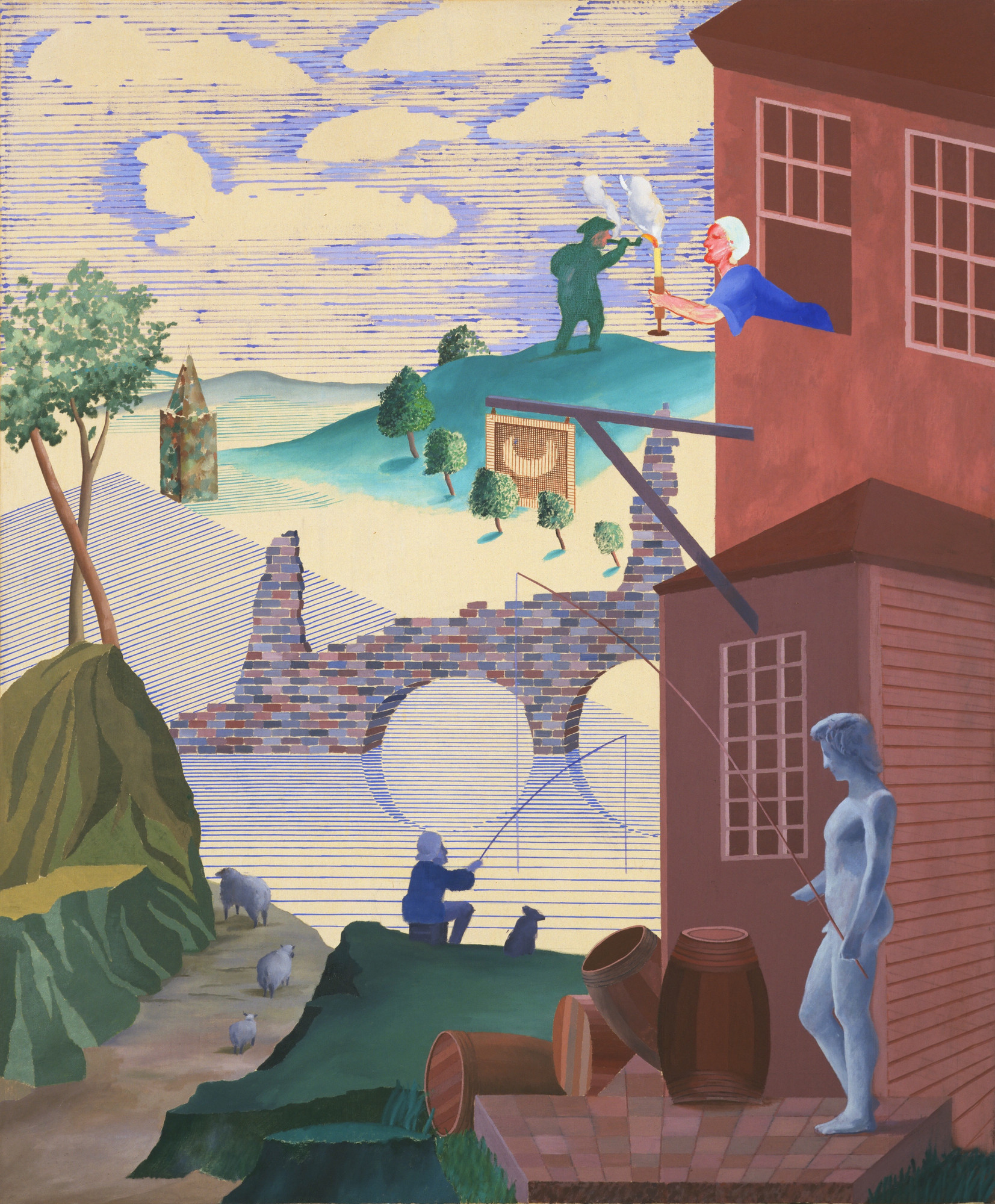In this scene, Hockney has drawn from a lifetime’s experience with perspective both on canvas and on the stage. He alludes to the lessons of Cubism to create this oil on canvas work.
The work demonstrates a scene that lets many consider cases of confounded and lost perspectives. The artist’s 1975 work “Kerby (After Hogarth) Useful Knowledge” was the consequence of research Hockney finished for a creation of The Rake’s Progress.
A Rake’s Progress is a progression of eight eighteenth century artworks by English craftsman William Hogarth. The canvases were created in 1732–33, then engraved in 1734.
The arrangement demonstrates the decay and fall of Tom Rakewell, a squanderer who was also the child and beneficiary of a rich dealer. Rakewell comes to London, squanders all his cash on lavish living, prostitution and betting and as an outcome is detained.
Similarities can be seen between David Hockney’s Kerby (After Hogarth) and the piece Satire on False Perspective, an etching delivered by William Hogarth in 1754 for his companion Joshua Kirby.
Hogarth and Hockney utilise reverse perspective. Though the eye sees figures subside to wind up distinctly smaller when further away, the painter can create another effect by not holding fast to the regular truths of art completed with Western perspective.
What a craftsman is attempting to accomplish for individuals is carry them nearer to a topic. Hockney thinks workmanship is about sharing an ordeal or an idea. His work here demonstrates his continuing creativity with the drawn line. This same creativity is seen in his work from the 1970s.
Hockney’s work is influenced by his experience as a printmaker, Pop Artist and photographer. There is a lot that the artist has also done in the theatre, to create settings that magnify the impact that actors have on stage. A hefty portion of the way the artist organises the painting shows his experience with creating intense visual scenes in a limited space. Each area frames distinct tableaux as he plays without our ideas on perspective.


